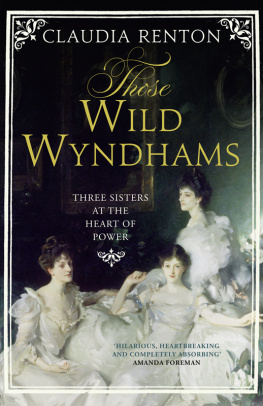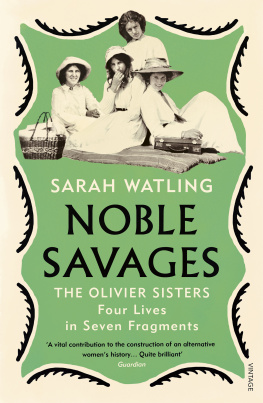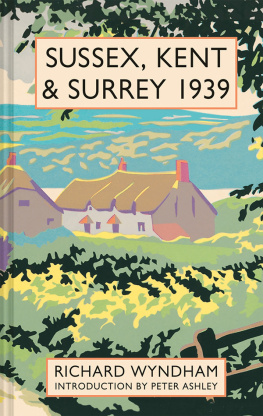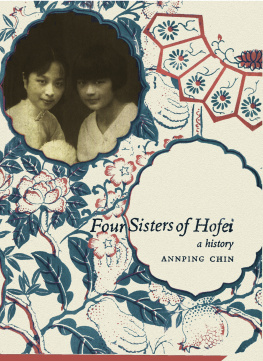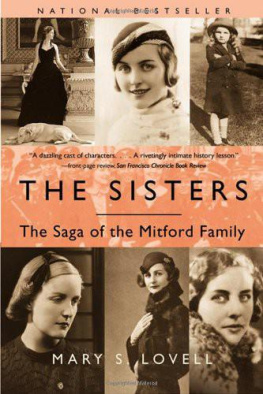Contents


For Mama.
Always.
La Chanson de Marie-des-Anges
Y avait unfois un pauvgas,
Et lon la laire,
Et lon lan la,
Y avait unfois un pauvgas,
Quaimait cellqui nlaimait pas.
Elle lui dit: Apportmoi dmain
Et lon la laire,
Et lon lan la,
Elle lui dit: Apportmoi dmain
Lcur de ta mr pour mon chien.
Va chez sa mre et la tu
Et lon la laire,
Et lon lan la,
Va chez sa mre et la tue,
Lui prit lcur et sen courut.
Comme il courait, il tomba,
Et lon la laire,
Et lon lan la,
Comme il courait, il tomba,
Et par terre lcur roula.
Et pendant que lcur roulait,
Et lon la laire,
Et lon lan la,
Et pendant que lcur roulait,
Entendit lcur qui parlait.
Et lcur lui dit en pleurant,
Et lon la laire,
Et lon lan la,
Et lcur lui dit en pleurant:
Tes-tu fait mal mon enfant?
Jean Richepin (18481926)
Do you know Richepins poem about a Mothers Heart? It means something like this:- there was a poor wretch who loved a woman who would not love him. She asked him for his Mothers heart, so he killed his Mother to cut out her heart and hurried off with it to his love. He ran so fast that he tripped and fell, and the heart rolled away. As it rolled it began to speak and asked Darling child, have you hurt yourself?
George Wyndham to Pamela Tennant, 11 March 1912
Integrated
. Wilfrid Scawen Blunt imagebroker/Alamy
. Mrs E. Tennant, afterwards Lady Glenconner, by Violet, Duchess of Rutland (pencil on paper, 1895) Russell-Cotes Art Gallery and Museum, Bournemouth, UK/The Bridgeman Art Library
. Mr Henry Cust, by Violet, Duchess of Rutland (pencil on paper, c.1890s) Russell-Cotes Art Gallery and Museum, Bournemouth, UK/The Bridgeman Art Library
. Edward Grey, 1st Viscount Grey of Fallodon, by Harry Furniss (pen and ink, 1880s1990s) National Portrait Gallery, London
. They dont call it Home Rule, but the path is the same, after Sir Francis Carruthers Gould (line block postcard, c.1903) National Portrait Gallery, London
Edward Wyndham Tennant, by John Singer Sargent Lebrecht Music and Arts Photo Library/Alamy
Picture section
. Madeline Wyndham, by G. F. Watts Private Collection
. Percy Wyndham, by Frederic Leighton Stanway House
. Guy, Mary and George Wyndham Stanway House
. Madeline Wyndham with Pamela Wyndham Stanway House
. Percy Wyndham with George Wyndham Private Collection
. Mary Wyndham, by Valentine Princep Stanway House
. Mary Wyndham, by Edward Poynter Stanway House
. Wilfrid Scawen Blunt British Library
. Arthur James Balfour, by London Stereoscopic & Photographic Company (albumen cabinet card, 1870s1900s) National Portrait Gallery
. George Wyndham, by Frank T. Foulsham, published by Underwood & Underwood (albumen stereoscopic card, 1900)
. Mananai, Madeline, Sibell, Pamela and Charlie Adeane Private Collection
. Madeline Wyndham and Madeline and Lettice Adeane Private Collection
. (top left) Henry John Cockayne-Cust, by Sir Leslie Ward (Spy), 15 February 1894, Vanity Fair cartoon (colour litho), in Private Collection Look and Learn/Peter Jackson Collection/The Bridgeman Art Library; (top right) The Hon. Percy Scawen Wyndham, by Sir Leslie Ward (Spy), 30 October 1880, Vanity Fair cartoon (colour litho), in Private Collection Look and Learn/Peter Jackson Collection/The Bridgeman Art Library; (bottom right) Lord Elcho, by Sir Leslie Ward (Spy), 26 March 1892, Vanity Fair cartoon (colour litho), in Private Collection Look and Learn/Peter Jackson Collection / The Bridgeman Art Library; (bottom left) Sir Edward Tennant, 2 November 1910, Vanity Fair cartoon (colour litho), in Private Collection Look and Learn/Peter Jackson Collection/The Bridgeman Art Library
. Arthur Balfour and Mary Charteris, by Lady Ottoline Morrell (vintage snapshot print, 1925) National Portrait Gallery, London
. Pamela Grey, by unknown photographer (sepia-toned vintage bromide print on card mount, mid-1920s) National Portrait Gallery, London
On a cool February night in 1900, Pamela Tennant, wife of the industrialist Eddy Tennant, was dining at the London townhouse of her brother and sister-in-law, Lord and Lady Ribblesdale. The Season had not quite started, but there was already a smattering of balls. By early summer that smattering would become a deluge, as seemingly every house in Mayfair echoed to the strains of bands and Englands elite waltzed round and round camellia-filled ballrooms in what would prove to be the last year of Victorias reign. Thus far, London seemed to have escaped the disgusting yellow smog that had blanketed the city for months the year before, and added to the misery of the swathes affected by a bad strain of influenza that year.
Pamela was not really looking forward to the Season that was to come: or to any Season, for that matter. In the five years since she had married, her refusal to play ball socially had provoked several spats with her sister-in-law. Charty Ribblesdale, one of the audacious Tennant sisters who had launched themselves on to London Society twenty years before, could not understand why Pamela should wilfully clam up when faced with new people. Pamelas refusal to play by any rules but her own mystified Charty and her sisters Margot and Lucy. They thought it alien to the ethos of the Souls: their fascinating, chattering set who affected insouciant, swan-like ease, no matter how frantically their legs paddled beneath the serene surface.
The delightfully haphazard Mary Elcho, Pamelas eldest sister, was a leading light of the Souls. Pamela, beautiful, brilliant, a master of the pointed phrase, had it in her to joust with the best of them. But she chose not to. Instead, she professed disdain for those murdered Summers of the Season, and openly expressed her preference for Wiltshire, where she caravanned across the Downs in the company of her children. It was a very peculiar attitude.
The burly American placed next to Pamela also seemed ill at ease among Societys hubbub. John Singer Sargent, whose Carnation, Lily, Lily, Rose had dazzled the Royal Academy over a decade before, was establishing himself as a society portraitist par excellence, but he had little time for his sitters chatter. He preferred quiet times in the Gloucestershire village of Broadway with his sisters and nieces incidentally not far from where Mary Elcho lived at Stanway. He was very nice & simple, & very shy & not the least like an American, Marys friend Frances Horner reported to the artist Edward Burne-Jones after meeting Sargent (for Sargent, although an American by parentage, had been born and raised on the Continent), & he wasnt very like an artist either! he hated discussing all his great friends & talking about his pictures.
Perhaps Charty took a certain pleasure in seating Pamela next to Sargent that evening. A taste of her own medicine and Charty could justify the placement because Sargent was currently working on a portrait of Pamela and her sisters. It had been commissioned by their father, Percy Wyndham, who, with his wife Madeline, had built Clouds in Wiltshire, a house little over a decade old and already famous as a palace of weekending. Pamela, Mary and sweet-natured Madeline Adeane (who so unluckily after a whole brood of girls had finally succeeded in giving birth to a boy only for the premature infant to die the same day) had been sitting to Sargent ever since then.
Next page
